We use cookies to make your experience better. To comply with the new e-Privacy directive, we need to ask for your consent to set the cookies. Learn more
How To Get The Most From Your Black Powder Revolver
Shooting Black Powder Revolvers is not quite an exact science, though some careful thought, consistency and even experimenting will go a long way in helping you get the most out of your gun. These questions have been debated by shooters for more than 170 years, and we therefore have a wealth of knowledge and experience to draw on to help you achieve the best results possible.
First let's get into the technical details to understand the basics of percussion revolvers. The things I will write about here were all known by the developers of these arms back in the 19th century, and are just as true today as they were then.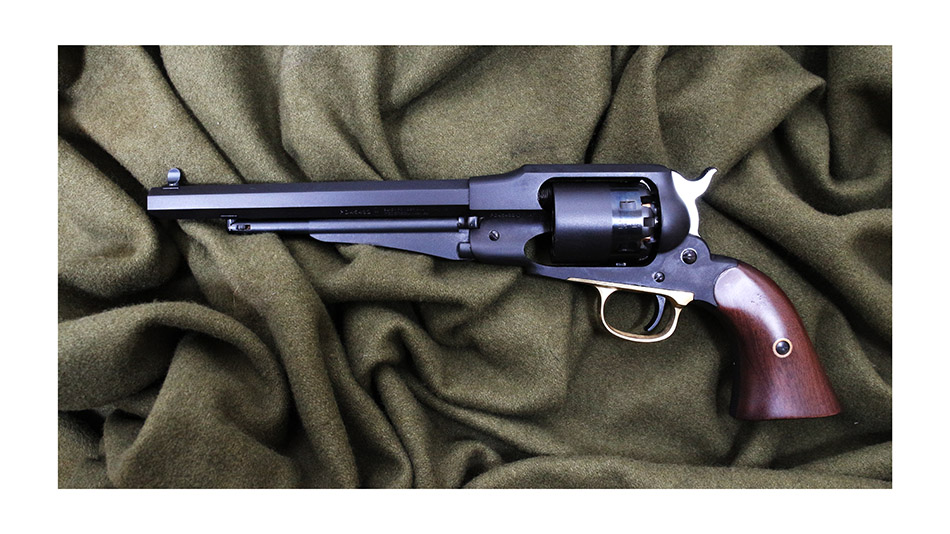
The bore
Let's check the bore and the rifling first. First of all it does matter a lot how the rifling is made. The cheaper reproductions are button rifled. This is done by pressing all grooves at once with a tool called a button that is pushed or pulled down the barrel. This is fast and easy way to make a rifling, but for the best accuracy we need something more sophisticated. Pedersoli, Uberti and Pietta use a different method: the broach rifling. This is done with cutting all grooves in one pass with a special progressive broaching bit. But before cutting the grooves the bore is reamed, lapped, straightened for maximum accuracy.
To have competition quality bores this is the only method. It is slow and more expensive but offers the best results.
In the 19th century many of the percussion revolvers were manufactured with gain or progressive twist rifling. The Remingtons and Colts were done like this. This means that the twist rate of the rifling is faster at the muzzle than at the breech. The purpose of the this rifling was simple: when the bullet exited the chamber and reached the forcing cone arrived in a low twist rate part of the bore so it did not deform too much, did not jump the rifling. As it passed through the bore the twist rate got faster and faster, to have the desired spin as it left the muzzle. I did some not really accurate measuring on my original New Model Army manufactured in 1863. I ran a loading rod with a tight fitting patch thru the bore and measured the rate of twist inch by inch. My results show that the twist rate is around 1:60 at the breech and 1:17 at the muzzle. I am sure this data is far from accurate but it is a good indication how it was done. It is possible to recreate this rifling today as well, but it does increase the manufacturing costs tremendously, without increasing the target shooting accuracy. Let's not forget that these revolvers back in the times of the Civil War were meant to fire military revolver cartridges of various types with various bullets and powder loads. The goal of these arms and cartridges were not to hit the center of the target at 25 meters but to punch a hole in a man sized target up to 15 yards.
We are lucky as we can adjust our bullet and powder load freely at the range searching for the top accuracy without the need of killing power. To fire a round ball accurately we don't need too much powder if we have the right rifling twist. A twist rate somewhere between 17-20 will work fine for sure. The faster the twist is the small the charge can be. A low charge means low recoil and improved accuracy.
The forcing cone and the muzzle crown are also very important parts of the bore. If they are not symmetric you can forget the top accuracy. If the muzzle crown is damaged or is off center, the escaping gases will push the bullet leaving the bore to one side. If the forcing cone is not made with proper care it will deform the ball entering the bore.
Check the crown and forcing cone of your gun periodically for damage, these are some of the most important parts of the gun for accuracy, and a damaged forcing cone or crown will introduce variance into your shooting that cannot be controlled.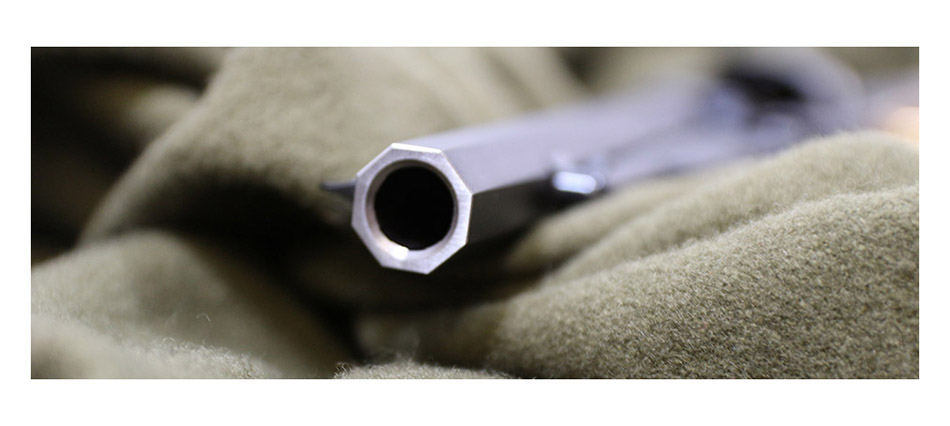
Selecting the ball size for your revolver
It is said that Remingtons like the .454' balls while Colt's like the .451' balls. This is absolutely not true. First of all no manufacturers use different tools for .44 cal Colts or Remingtons in making the bore. Second your bore determinates the necessary size of the projectile. The barrel has two diameters: one you can measure between the grooves and one you can measure between the lands. It is obvious that the groove-to-groove diameter is bigger than the land-to-land diameter. To determinate the exact ball size first you have to slug your barrel. Remove the cylinder and run an oversized greased soft lead ball through the bore driven by a wooden dowel. The biggest diameter you can measure of the deformed slug will be your groove-to-groove diameter. This is exactly the bullet diameter you will need to have a gas tight fit, and to help the rifling grabbing the bullet effectively. Of course, this is likewise dictated by the diameter of your chamber, as an oversized ball swaged into a chamber will fire a ball only as big as the diameter of the chamber. More on this later.
Controlling the fouling
Another important factor in shooting your revolver accurately is the control of fouling build up in the bore. A normal competition is 13 (plus one fouling) shots, so you have to make sure that the layer of blackpowder residue in your bore is constant to reach even gas pressures and even muzzle velocities. To reach this goal you need to things: a mirror bright polished bore (in the grooves and on the lands as well), and a good lube. If the bore is not polished well the black powder residue will build up faster. If the lube is not working properly the residue will become hard, so the fired balls will not be able to clean the dirt of the previous shot. You might also consider a wad over your powder charge, as this lubricates the bore immediately as the ball passes through it. Keep your gun clean between shooting, dirt will not only spoil your accuracy, but will eventually ruin your bore and corrode internal parts.
The cylinder
OK, we have a good size ball. But let's not forget that when we push the bullet into the chamber is shaves off a thin ring, so the diameter of the chamber will also have an effect on accuracy. Now this is a common problem with many of the reproductions on the market. The chambers tend to have a smaller diameter than what should be necessary in most cases. Imagine a situation when we selected the right size .451' bullet for our bore, but when we load into the chamber it is sized down to .442'. No more gas tight fit, no more accuracy' And this is not a fairy tale. This is what you can actually measure on some repros on the market. If the groove-to-groove diameter is .450' than the chamber diameter has to be at least .450' or rather .451'. All our reproduction revolvers are manufactured to exacting tolerances, so the shooter may rest assured he is getting the most consistent tool right out of the box.
It is also important that the diameter of the chambers has to be absolutely identical. A smaller diameter chamber will hold the bullet stronger than a larger diameter one and this will result a difference in the gas pressures.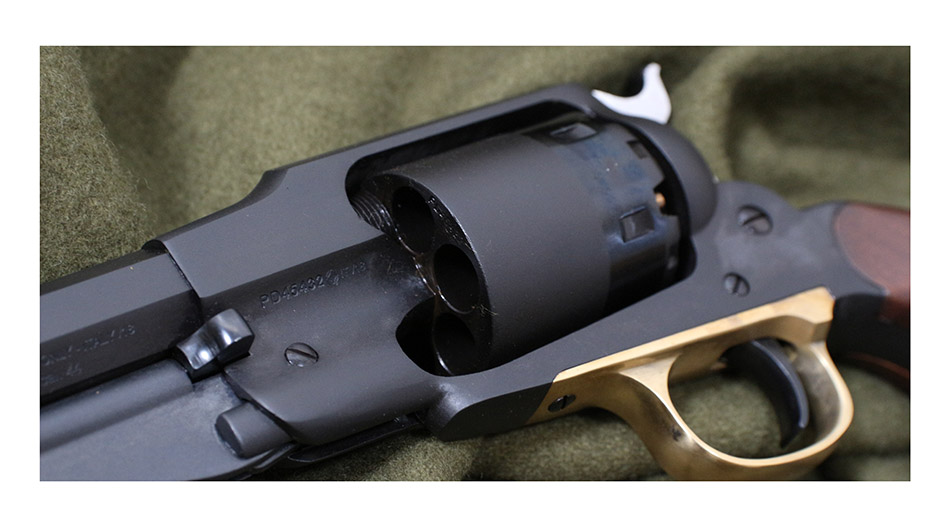
The cylinder gap
I see many inexperienced shooters checking the gap between the cylinder and the bore looking for the tightest fit. To tell you the truth it does not matter if this gap is 0,1 or 0,5 mm. What matters is that the distance must be the same with every chamber so the quantity of escaping gases are the same here every time. As with any kind of shooting, consistency is the key to accuracy, and reducing variables between shots will improve your shooting immeasurably.
The size of the vent hole of the nipples
The optimal size of the vent hole is between 0,7-0,9 mm on the nipples of a percussion revolver. The smaller the vent hole is, the more ignition problems you can have if you are using lower quality powders. The diameter is important but it is also important that all the nipples must be of the same manufacture with the same size and form vent hole channels. Vent holes in nipples can become larger with gas cutting over time, but fortunately this is easily and cheaply remedied with a new set of nipples.
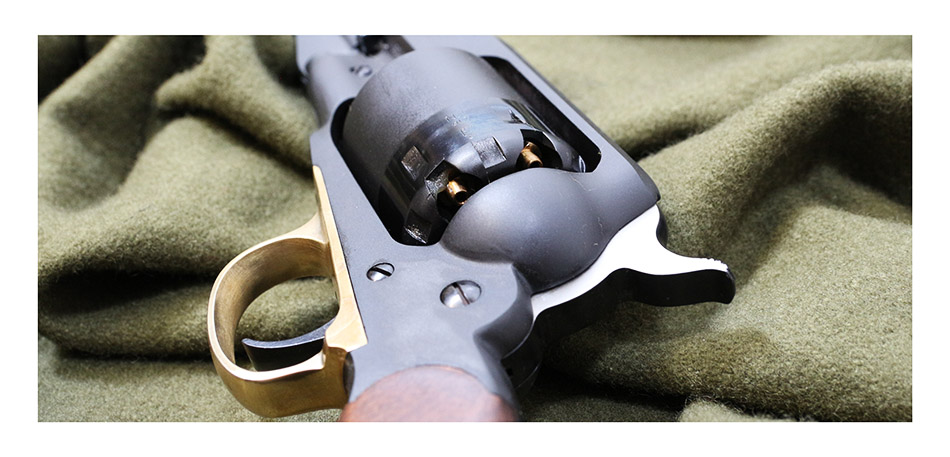 Indexing
Indexing
A crescent when you look down the barrel of your cocked and of course empty percussion revolver is something that is really painful. The crescent is caused by an indexing problem when the chambers do not line completely with the bore. Either the cylinder under, or over indexes and does not leave the cylinder locked, or in line with the breech. Fortunately, with our reproduction revolvers, new parts are readily available, and the remedy to this issue is, in almost all cases, resolved by fitting new internal parts as the old ones become worn with use.
The frame
The frame of the reproductions are manufactured two ways today. The first and older method is using cast steel the second and more precise and stronger way is using hammer forged steel blocks. Pedersoli, Uberti and Pietta reproductions are manufactured with forged steel frames. I prefer these, as the steel is uniform throughout, and can contain no air gaps or inclusions, as can gun made from cast parts.
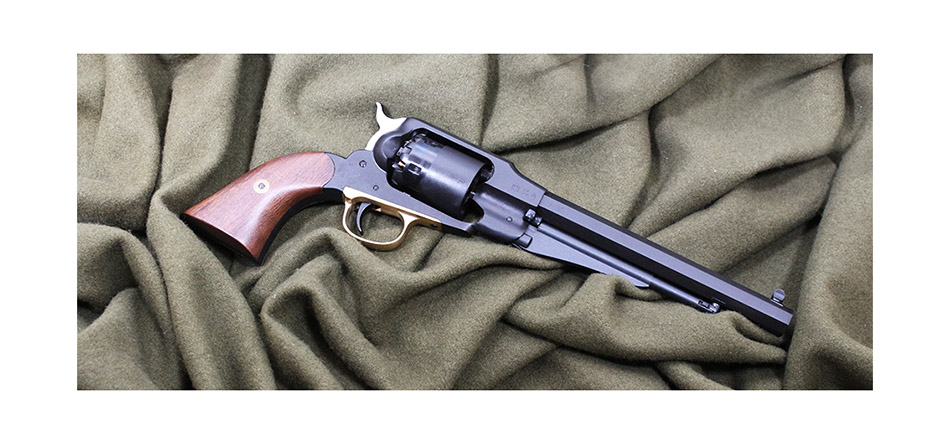 The trigger work
The trigger work
To place an accurate shot on the target you must have a good control on the trigger. It has to work like a Swiss watch. There are parts of the trigger job you can do at home, but in most cases I recommend you to contact a gunsmith if your trigger pull is too heavy of the trigger does not break. Polishing the surfaces to have a smoother action is something you can also do with fine papers. But to square the engaging surfaces of the sear and hammer is something that must be done by a capable individual. Remember: modifying the trigger pull can make your revolver unsafe, and it is not recommended to try this job at home. The gunsmith will have the proper tools, knowledge and experience to do this. The competition grade revolvers, like the Pedersoli or Pietta Remington usually don't need any modification. They will work well out of the box.
 Loading your revolver for accuracy
Loading your revolver for accuracy
- Slug your bore to determinate the ball size you need. Stick with round balls if you go for accuracy, conical are not an advantageous choice.
- Check all the points I listed here in this article.
- Choose a good quality powder brand. Go for the faster burning 4Fg or 3Fg or fine powders.
- Use a moderate powder charge. Consult your manufacturer's published literature for recommended powder charges, and never exceed these. Remember if using a black powder substitute, your charge cannot safely be the same as with true black powder.
- Don't bother with fillers, they make a
mess. There is some argument to suggest that this lifts the ball closer to the
rifling, but this can be achieved much better with a wad. - A wad will cushion the acceleration of the ball and help it enter the rifling more gradually, besides taking up space in the cylinder. Lubricated wads will also help keep fouling soft.
- Use a good quality lubricant on top of the bullet to keep your fouling soft and to avoid chain fires.
- Always ensure you use correct fitting percussion caps to avoid chain fires, and promote consistent ignition.
These few tips will work well on any kind of percussion revolvers regardless of design or maker. But don't forget: the best part in black powder shooting is experimenting. So find your own rules, and share with us what works.
Remember, we stock the best range of muzzle loading supplies in the country. Please order on our website, or by telephoning 0113 256 9163 or emailing [email protected].
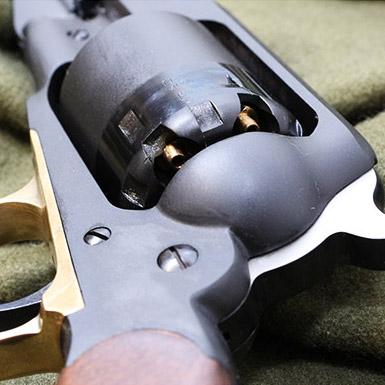
 Loading your revolver for accuracy
Loading your revolver for accuracy